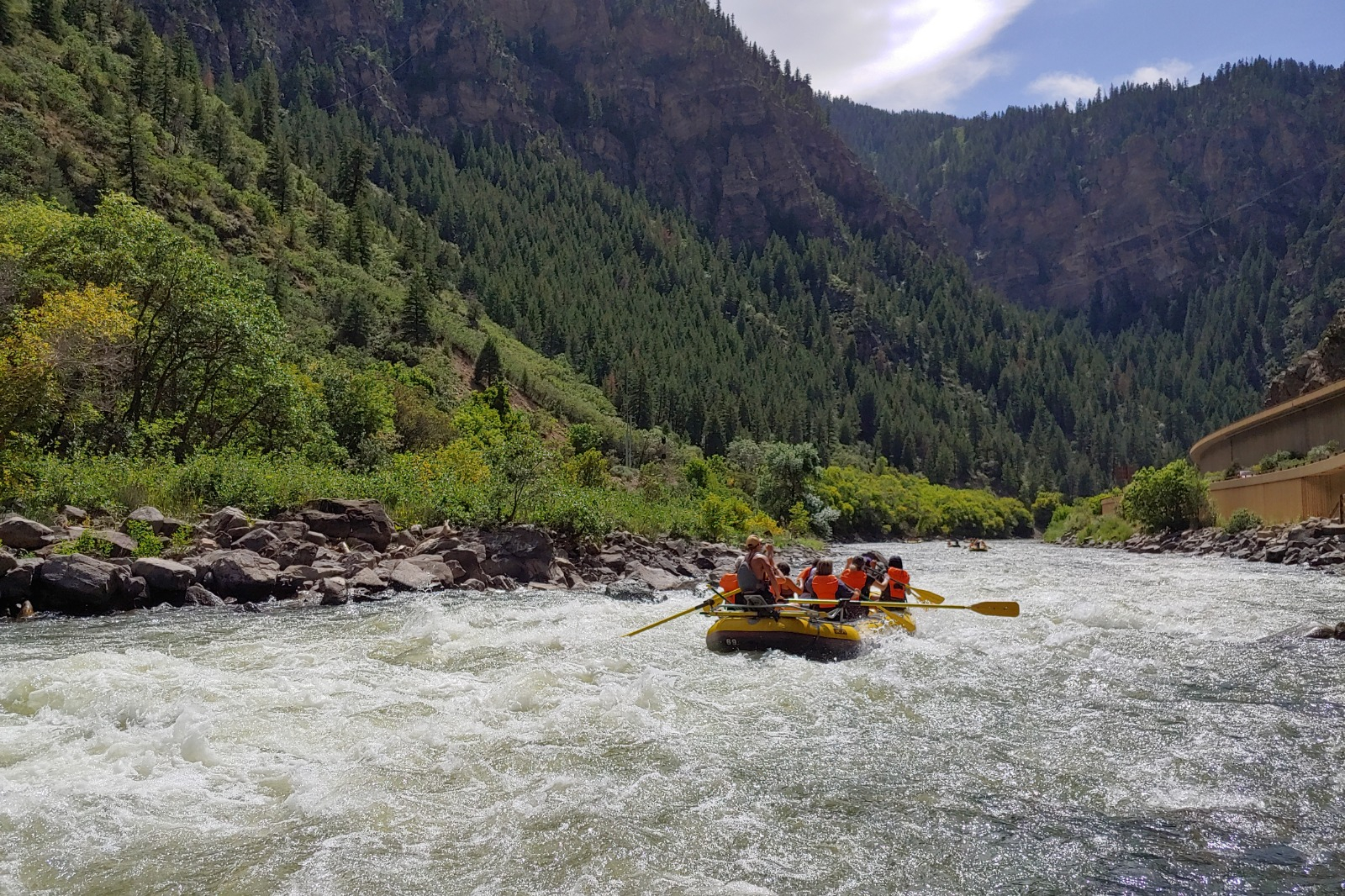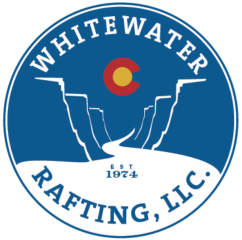Best Colorado Rivers For Whitewater Rafting

Colorado is filled with rivers that are perfect for whitewater rafting. The state has more than a dozen commercially rafted rivers. It doesn’t matter if you are a beginner just getting your feet wet or a salty expert with years of rafting experience; there’s a river for you in the Rocky Mountains. Colorado has excellent rafting spots all over the state that are ideal for a fun family adventure or a massive heart-pounding adrenaline rush – just take your pick.
The whitewater rafting season in Colorado is from May through September, depending on the conditions. The earlier part of the season – late May, June, and early July – is known for its fierce whitewater rapids resulting from the spring snowmelt. Prime rafting season occurs earlier in the year at higher elevations and continues throughout the summer as the massive snowpack melts away in the summer heat and travels downstream.
What are the best Colorado rivers for whitewater rafting? It depends on what part of the state you’re looking to explore. Here is our complete list of the top places to go rafting in Colorado:
Colorado River
The Colorado River is divided into two sections in Colorado: the upper and the lower. Rafting begins near Kremmling and travels southwest, past Glenwood Springs and Grand Junction, and into Utah. The river has cut through the mountains, so there’s beautiful scenery as you travel through the canyons and ravines. It is one of the best rivers in the state for viewing natural wildlife along its route. The Colorado River has exciting sections, like the Shoshone section or Gore Canyon, and more relaxing ones that are terrific for families with younger children, like Glenwood Canyon.
Gore Canyon is considered one of the most treacherous runs in Colorado, with Class IV and Class V rapids. Glenwood Canyon near the town of Glenwood Springs is a hit with families and groups who want a rafting experience heavy on scenery and natural beauty yet calmer on the water. Rafting guides in Glenwood Springs have half-day and full-day rafting adventures through the canyon, along with overnight excursions that combine rafting and camping.
Arkansas River
Although it is a bit removed from its namesake state, the Arkansas River is a big-time player in Colorado when it comes to exhilarating rafting. It begins near the town of Leadville and travels southeast through Salida, Canon City, Pueblo, and Lamar before leaving the state. (FYI: It eventually reaches the state of Arkansas before dumping into the Mississippi River.)
The river slices steeply through the Rockies, plunging 5,000 feet in its first 125 miles. The Browns Canyon stretch of the river near the town of Salida is arguably the most beautiful route in Colorado. Another fantastic section for groups and families is Bighorn Sheep Canyon near the town of Canon City. Veteran rafters love the more intense sections of Royal Gorge for pulse-pounding lines. One favorite Royal Gorge run for pros slips through the narrow canyon, with Class IV and Class V rapids as you pass under the iconic suspension bridge.
Clear Creek
A favorite for tourists and Denver day-trippers is Clear Creek. Clear Creek is only about 30 miles west of Denver along Interstate 70. The uber-accessible river near the town of Idaho Springs doesn’t disappoint when it comes to thrills. (Don’t be fooled by its “creek” moniker: Clear Creek is the steepest commercially rafted river in the state.) The vertical and narrow canyon provides higher-grade routes for experts but also has relaxed stretches for beginners and intermediates, with loads of wildlife and nature included along the way. There are half-day and full-day outings from which to choose.
Animas River
Like the Colorado River, the Animas River is split into two distinct sections: the Upper and the Lower. The Lower Animas River runs through downtown Durango; the Upper Animas put-in is in Silverton. The Durango Whitewater Park has manufactured rapids on the Lower Animas that do not disappoint, with calmer, fun, lazy floats that you can take for a half day or full day. The Upper Animas is considered one of the most challenging commercially rafted rivers in the United States. The upper section starts near the town of Purgatory, just outside Durango. Purgatory presents the country’s longest uninterrupted stretch of Class IV and Class V rapids – more than 30 continuous miles.
Cache la Poudre
The Cache la Poudre River – or “the Pooder,” as it’s known – is the first and only federally designated National Wild and Scenic River for intermediate and expert rafters. If you want to raft this river, it’s best to have a seasoned outfitter who knows the lines. The river is near Fort Collins and popular with the northern Front Range die-hard rafters. It is also accessible from Estes Park. Poudre Canyon, a national scenic byway between Walden and Fort Collins, is exceptionally picturesque. Rafting on the river begins mid-May, with more challenging rapids in early August and easier runs in early September.
Yampa River/Green River
The Yampa River is the rafting gem of northwestern Colorado. It flows through Dinosaur National Monument, where it meets up with the Green River. The Yampa River is the longest non-dammed river in the state. The Yampa River has relaxing trips through archeological sites with rock carvings and interesting geological formations. Shorter half-day excursions launch from downtown Steamboat Springs and offer Class II and Class III whitewater stretches from mid-May to mid-June, depending on the water level. The Lodore Canyon section of the Green River has a few exciting rapids with some sandy beach areas for an overnight campsite.
Dolores River
With over 50 miles of rafting available, the Dolores River is a hotbed for Class III and Class IV rafting in the southwestern part of the state, near the town of Cortez. The steep embankments of Dolores Canyon in the San Juan Mountains are home to majestic bighorn sheep and other wildlife that you will see on the route. Although the rafting season is short – only typically from April to June – it shouldn’t be missed. The river has more than 175 miles of raftable waters so that you can raft and camp for multiple days without interruption. Most trips start in Cortez, but a few longer routes can begin in Durango.
Piedra River
The Piedra River is another scenic rafting trip that puts in near Durango. Piedra means “rock” in Spanish, and the waterway is known as the “River of the Stone Wall” because of its steep canyon walls. The Piedra River meanders through the remote wilderness, covered by a thick forest and copious wildlife. The Upper Piedra, located northwest of Pagosa Springs (20 miles west of Durango), is a technical route with stairsteps and large drops. There are numerous Class III and Class IV rapids. The Lower Piedra takes things up a notch with even bigger thrills while descending through the 1,000-foot-deep box canyon. The lower section is best suited for experienced rafters over age 16. A tour through the upper and lower areas of the river makes for an extraordinary overnight adventure for adult adrenaline hounds.
Eagle River
The Eagle River is another easy-to-find river along Interstate 70. Slightly more than an hour’s drive west from Denver, the river is accessible in Eagle, Wolcott, and Edwards. The Eagle River is one of the few free-flowing rivers in Colorado and gets its rapids from the melting snowpack on Vail Mountain. The river provides can’t-miss excitement during the spring and early summer when the river is brimming with fresh, cool water from higher elevations. Newbies enjoy the half-day route because it isn’t overly technical but has sensational rapids.
Gunnison River
Gunnison Gorge is a towering canyon of red sandstone and black granite in a remote spot in the Uncompahgre Mountain Range just outside the city of Gunnison. This is authentic wilderness backcountry – horses and donkeys are needed to haul the rafts and gear to the put-in. The river offers plush scenery, challenging rapids, and almost-guaranteed wildlife encounters.
